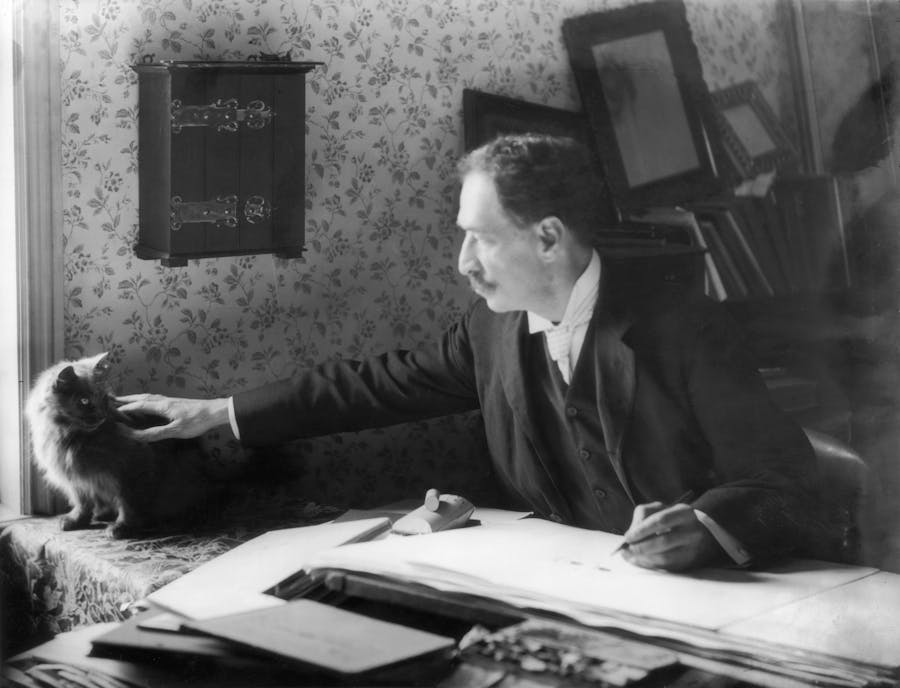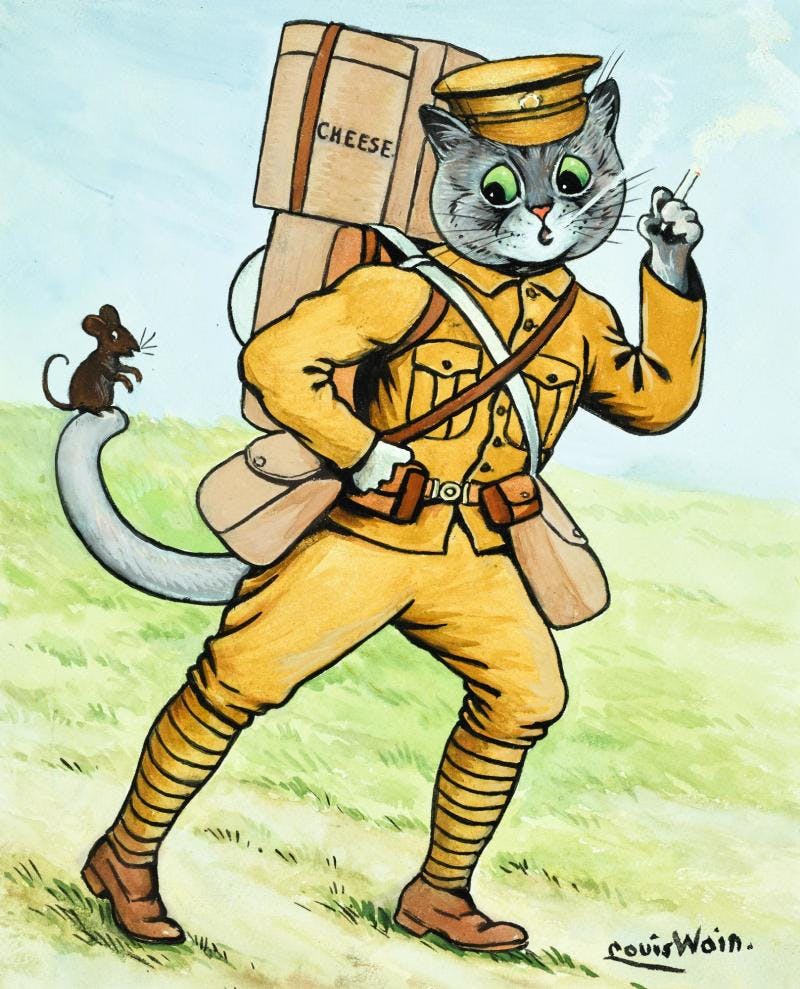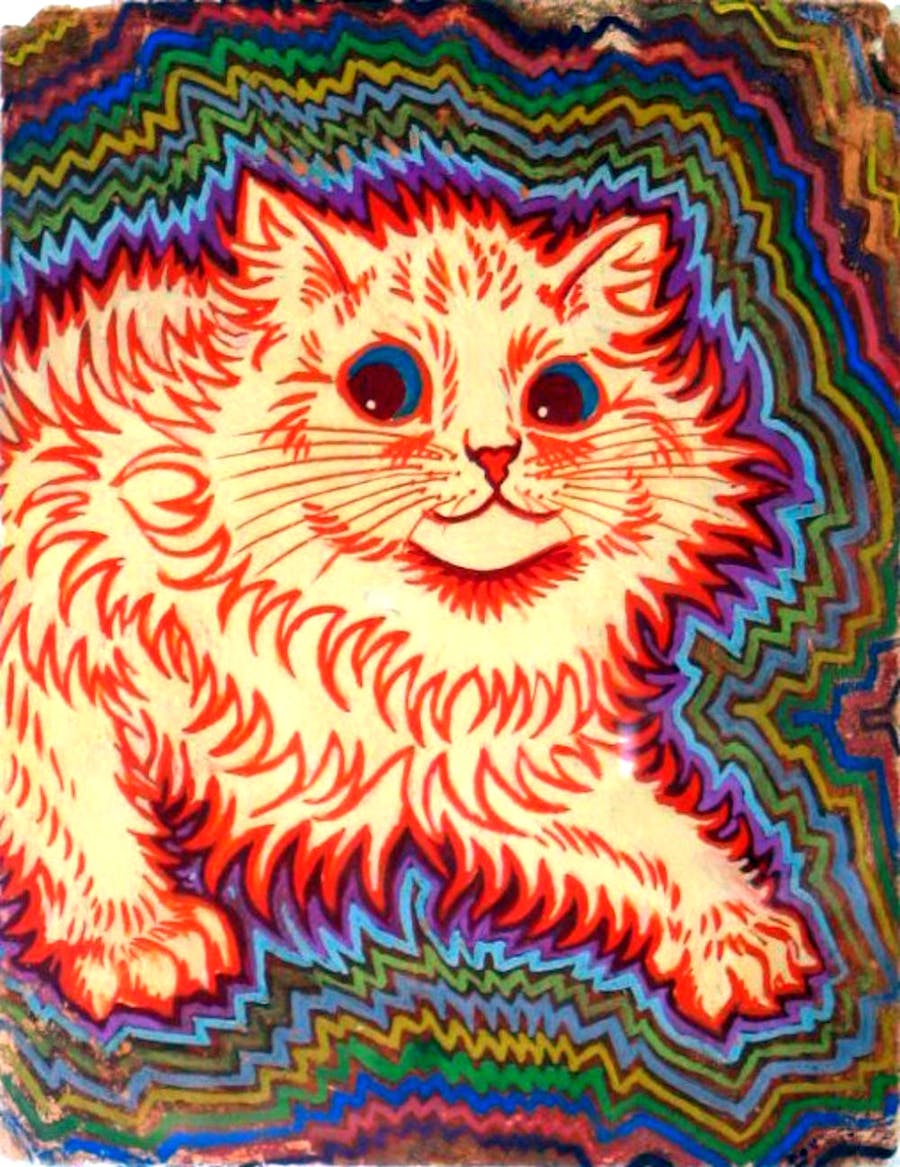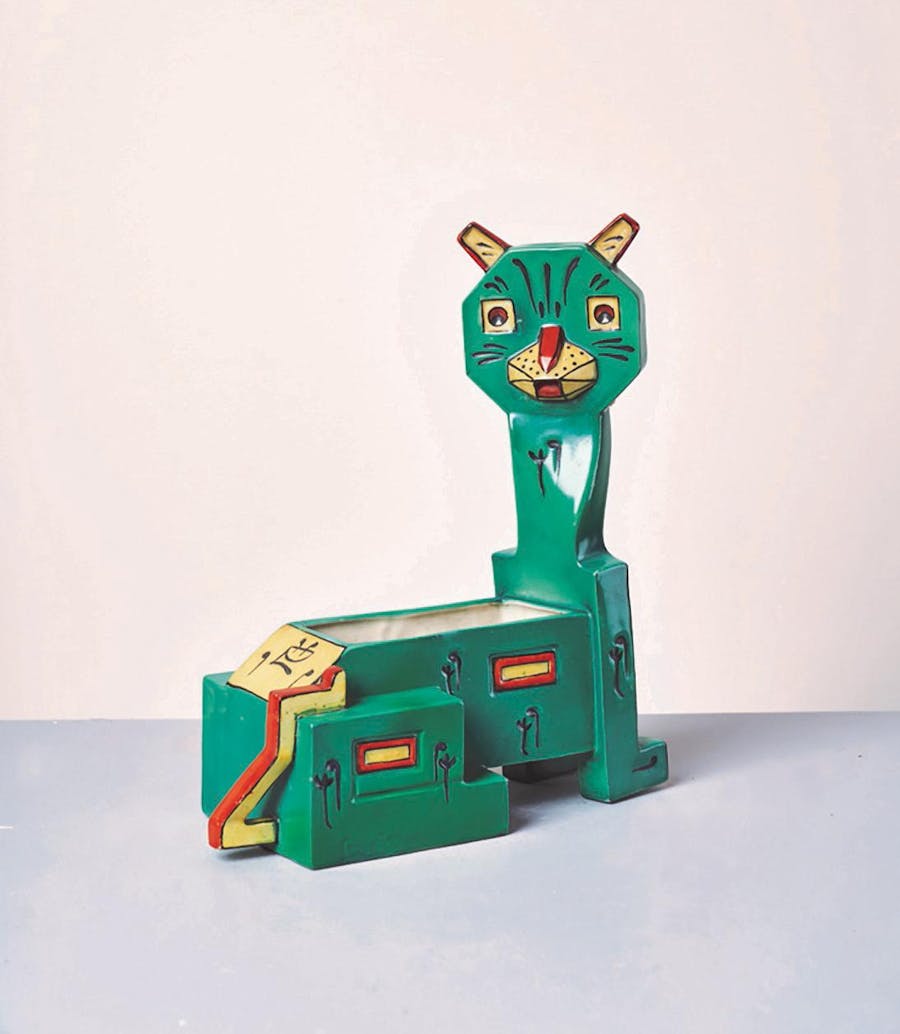Louis Wain’s Psychedelic Cats
Recognizable and revered, Louis Wain’s wide-eyed, grinning and sardonic cats are also known to fetch significant sums on the secondhand market.
Anthropomorphized animals have graced children’s books and television shows for years: Mickey Mouse, Rupert Bear, the Berenstain Bears, Paddington Bear, Corduroy Bear, Peter Rabbit, The Cat in the Hat, Patrick Star, and so the list goes on.
And yet there are animals who have been sporting clothing, walking upright, drinking tea and playing musical instruments long before any of these friendly creatures came along: Louis Wain’s anthropomorphized and psychedelic cats.

Louis William Wain was born on August 5, 1860 in Clerkenwell, London. Although his name is today synonymous with wide-eyed and grinning cats, Wain did not start out wanting to be a cat illustrator. He felt early on in his career that nobody would take him seriously if he drew pictures of cats, and so becoming a press artist was his initial ambition. He produced animal and country scenes in his early years and had work published in several journals.
Wain’s interest in lively cats grew when his wife Emily Richardson, whom he married at the age of 23, contracted cancer. Though she passed away just three years into their marriage, during the time of her illness Wain taught her cat Peter to do drinks, such as wear human glasses and pretend to read a book. The effects were twofold: Richardson was kept amused, and Wain was kept busy sketching the cat’s antics. After her death, Wain continued to draw cats and in the mid 1880s his first anthropomorphized cats were published in the Christmas issue of Illustrated London News under the pseudonym of George Henri Thompson. ‘A Kittens’ Christmas Party’ depicted 150 cats, many of which resembled Peter, completing activities like sending invitations, holding a ball, playing games and making speeches.
See also: The Story of the Staffordshire Dog Figurines
Though the cats in this eleven-panel drawing remained on all fours, unclothed and without human-like expressions, in subsequent years, Wain’s cats soon took on more humanlike features, for instance walking upright, sporting sophisticated clothing and smiling broadly. His cats fished, smoked, golfed and enjoyed the opera – and proved very popular in Victorian and then Edwardian England, where they could be found in prints, on greeting cards and in satirical illustrations.

His illustrations were so popular that, at the beginning of the 20th century, most English homes had at least one of his famous cat annuals on the wall and many nurseries had Wain posters. Before Wain, cats in England were often held with contempt, but his work helped to humanize them and demonstrate them as a species to be admired and loved. “He made the cat his own,” the writer H.G. Wells once remarked. “He invented a cat style, a cat society, a whole cat world.”
Wain became known as a leading authority on all things cats and, according to Illustration Chronicles, he was elected president of the National Cat Club. He judged cat competitions and was involved in several animal charities, all of which helped to bolster England’s love and appreciation for the domesticated animal.

Thanks to his fun, wide-eyed and rather sardonic cats, Wain was projected into the public eye and enjoyed significant recognition. He was a prolific artist and could produce as many as several hundred drawings a year. He also illustrated around one hundred children’s books.
See also: Peter Beard: Into the Wild
Yet there is a darker side to Wain’s legacy, based on his struggles with mental health. Though never officially diagnosed with schizophrenia, many believe that he suffered from this condition and some have argued that his later, more abstract and vibrant drawings demonstrate his psychotic deterioration. The artist spent much of his life in institutional care.

Wain also lacked a sense of business acumen, which was often exploited. He was known to sell work outright and not think to ask for publishing royalties. By the time World War I broke out in 1914, Wain found himself struggling to find a commercial market amid the wartime paper shortages. By the 1920s, poverty had struck. His depression from his wife’s death continued and his mental health deteriorated.
See also: Staffordshire Pottery: Britain's Ceramic Center
Though he was never financially successful as an artist, today his work is widely reproduced and recognized, and sees considerable results on the second hand market, reaching tens of thousands of dollars. In 2005, Wain’s The Maypole achieved £25,000 ($45,500) at Bonhams.

For a brief period, Wain branched out into ceramics, creating a collection of bizarre and brilliant futurist cats.
Webb’s, an auction house in Auckland, New Zealand, recently offered one of these ceramic cats for sale. The story is the type one might hear on Antiques Roadshow: the c. 1914 ceramic cat in Cubist style was purchased at a garage sale in 1986 for NZ$1, where it had been filled with soil and used as a jardiniere. After emptying out the soil, putting it on her shelf and enjoying the cat for thirty years, the new owner consigned the piece to Webb’s earlier this year with an estimate of $3,000-6,000. It went on to achieve $9,250.
Caolán McAleer, Head of Decorative Arts at Webb’s, says, “We’re absolutely thrilled with the result. It demonstrates the rarity of the larger cats to the market and the everlasting popularity of Wain to an international client base.”
Despite Wain’s trying life, perhaps knowing that his cats continue to bring great happiness and entertainment would give him some sense of comfort and peace.


